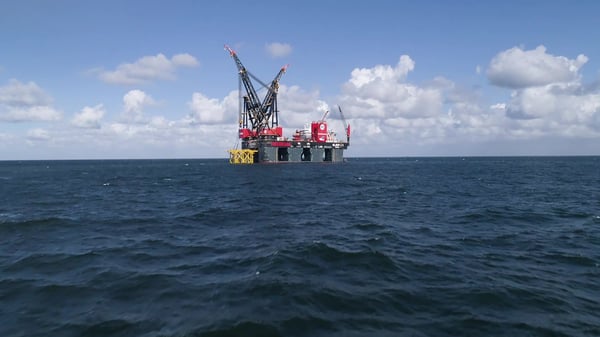
Protecting Marine Life
Heerema Marine Contractors and Heerema Fabrication Group are currently working with the University of Dundee's School of Science and Engineering on innovations that could significantly reduce or eliminate underwater noise pollution.
Throughout the marine industry, there is an increasing focus on sustainability, which has introduced measures to reduce air pollution from harmful emissions within many companies. However, noise pollution, especially within offshore construction, is an area that still requires significant improvements.
Noise Pollution
The impact of noise pollution on marine life is two-fold; there are concerns about direct hearing damage in animals (temporary or permanent) alongside disruption to their communication and navigation signals, which in turn can affect migratory patterns. All of these issues can cause stress to marine life, and with difficulties gathering data, the long-term impact is unknown.
During the installation of wind turbines, wind farm substations, converter platforms, and traditional oil and gas facilities, pile-driving operations generate considerable noise. Globally, several countries are challenging noise pollution by introducing underwater noise restrictions; however, for Heerema, the ambition is to go further than to be compliant and to create 'silent foundations.' The development of alternative pile foundations that could be installed without producing significant underwater noise is currently ongoing.
Silent Foundations
Two foundation concepts are under development, and these are push-in piles and large helical or screw piles. The push-in pile design replaces a traditional single open tubular pile with a cluster of four smaller diameter open tubular piles. This design can eliminate noise pollution as it requires no pile-driving or hammering - instead, after some strokes, each of the piles is pushed into the soil with two or three providing the uplift resistance required to push in the fourth. This concept might sound complicated, but it uses a similar principle to onshore installations of sheet pile walls.
The helical pile foundation suits foundations that require shallow penetration in the seabed. The pile has a helical blade at its tip rotated during installation to allow the pile to penetrate the soil. This concept includes a moment arm that will connect to one of Heerema's vessels to provide the required reaction force. Also, this pile is prepared for the future as by reversing the process, we can use it for removing foundations allowing low-cost decommissioning and full recycling or re-use of piles.
Testing and Modeling
The University of Dundee's School of Science and Engineering is carrying out a six-month testing and modeling program. The researchers involved have considerable experience developing helical piles in previous research projects in collaboration with Durham University and the University of Southampton. This program includes physically testing the piles using 3D-printed steel models in a geo-centrifuge, a device that simulates realistic soil stresses and installation conditions to match full-scale behavior using small models (1 to 100th scale).
In the centrifuge, the installation requirements (forces and torques) and the installed capacity of the piles and pile clusters can be tested and measured directly. These tests complement the University of Dundee's ongoing research using discrete element method (DEM) modeling for varying soil conditions and pile designs. By using this method, a complete evaluation of the installation process and in-place performance can be analyzed using a range of variables.
Their process replaces the millions of soil particles the pile would contact with on the seabed with larger balls with the same behavior as sand particles. Using this approach of combining physical and numerical modeling helps with rapid development in a controlled environment where many impacts on pile behavior can be assessed. Their testing program will reduce development costs when we move to full-scale tooling development and helps to de-risk future use of these low noise and sustainable foundation concepts.

/People%20for%20job.jpg?width=600&name=People%20for%20job.jpg)